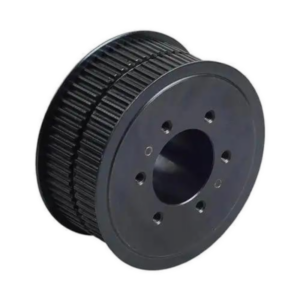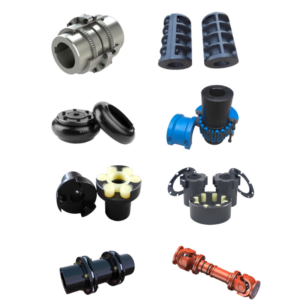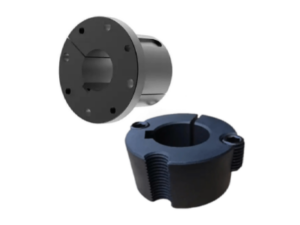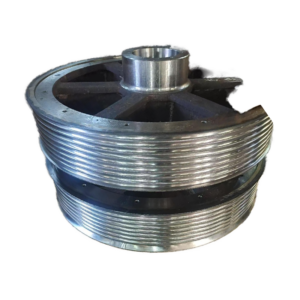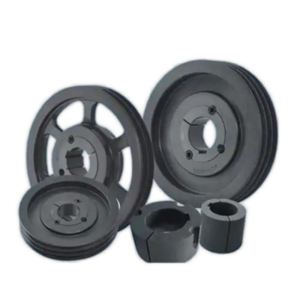Timing pulleys are critical components in synchronous transmission systems. This article explains two key aspects of timing pulley selection and identification: how to calculate pitch diameter and how to determine whether a pulley has flanges.
📐 Part 1: How to Calculate Pitch Diameter of a Timing Pulley
The pitch diameter (also known as the effective diameter) is essential in selecting or designing a pulley. It is calculated using the following formula: Pitch Diameter (D)=Pitch (P)×Number of Teeth (Z)\text{Pitch Diameter (D)} = \text{Pitch (P)} \times \text{Number of Teeth (Z)}Pitch Diameter (D)=Pitch (P)×Number of Teeth (Z)
- Pitch (P): The distance between the centers of two adjacent teeth (e.g., 5mm for 5M, 14mm for 14M).
- Z: Number of teeth on the pulley.
✅ Example 1: 5M Timing Pulley with 40 Teeth
- Pitch = 5 mm
- Teeth = 40
D=5×40=200 mmD = 5 \times 40 = 200\,\text{mm}D=5×40=200mm
✅ Example 2: 14M Timing Pulley with 30 Teeth
- Pitch = 14 mm
- Teeth = 30
D=14×30=420 mmD = 14 \times 30 = 420\,\text{mm}D=14×30=420mm
This pitch diameter is used for belt length calculations and center distance design.
🔍 Part 2: How to Identify Whether a Timing Pulley Has Flanges
Flanges are circular side plates on pulleys that prevent the belt from slipping off during operation. There are several ways to determine whether a pulley has flanges:
🔸 1. Visual Inspection
- With flanges: Raised edges on one or both sides of the pulley.
- Without flanges: Flat sides with no protruding rings.
🔸 2. Model Suffix or Code
Some manufacturers use suffixes in the part number to indicate flange status:
- F – With flanges
- NF – No flanges
- L / R – Flange on left or right side only
Example:
- “T5-20F” means a T5 pulley with 20 teeth and flanges.
- “8M-40-NF” means an 8M pulley with 40 teeth and no flanges.
Note: Not all manufacturers include flange info in the model. Always verify with technical data.
🔸 3. Technical Drawings or Product Catalogs
The most reliable method is to check CAD drawings or datasheets, which clearly show whether flanges are included and their dimensions.
🔸 4. Ask the Supplier
When in doubt, always confirm with your supplier whether the pulley includes flanges. In many cases, flanges can be ordered separately or installed manually.
🧩 Conclusion
When working with timing pulleys:
- Use the tooth count and pitch to calculate pitch diameter easily.
- Check the flange design using visual clues, model codes, technical drawings, or supplier confirmation.

